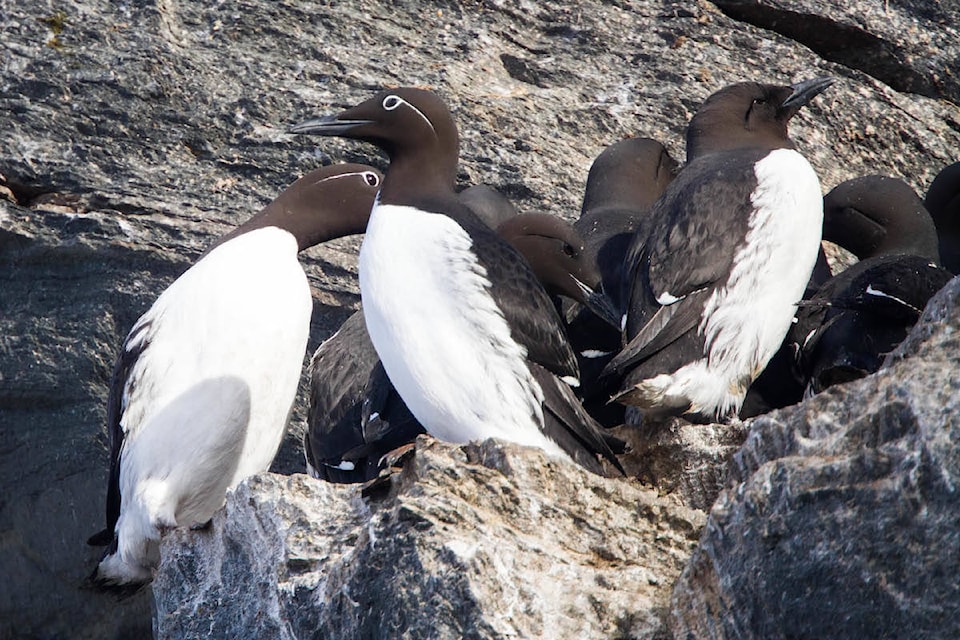By Margo Hearne
Flat calm and clear. That’s the best way to watch birds from the ferry to Prince Rupert, if there are any birds to watch. The flocks of Sooty Shearwaters that usually soar up from the ocean at this time of year when we go by were not there, nor were the Pink-footed Shearwaters from Chile that usually spend the summer here. There were a few hundred Common Murres in Edye Pass, but even their numbers are down from previous years.
A recent publication, “Birds of Middleton Island” arrived in our inbox recently. It was published in Western Birds (Vol. 48, No. 4 2017) and has an incredible amount of information on the birds of Middleton Island, a small offshore island in the Gulf of Alaska. It is 115 km south of the Alaska mainland, 9 by 3 km in size with lagoons and willow thickets throughout. There are also dilapidated U.S. military buildings from a previous occupation.
Middleton provides the only landfall for the over 100 migrant bird species that strike out from the mainland, across the Gulf and head east and south to the Pacific Coast. Their travels include Haida Gwaii. A number of the birds recorded on Middleton have also been seen here. Common Murres nest there and swim to these waters when the young have matured enough to travel this far. The ones seen in Edye Pass on the way to Prince Rupert might well have nested on Middleton.
Common Murres nest in cliffs, barely clinging to the rocks. Unfortunately many of the natural cliffs in Middleton have eroded away. In 1978 there were over 10,000 nesting murres, but in 2013 there were only 820. Man-made structures were built which helped a bit. Although the murres are fairly common in south-central Alaska, big drops in numbers like this do not bode well for the species so it was was great to see them in large floating rafts, holding into the current as they do and leaving a trailing wake behind them.
Another book arrived in the mail this past week. Birds of Prey of the West is a new book about the raptors of western North America. It is written and illustrated by Brian Wheeler, quite likely North America’s leading expert on the subject. He has 14 illustrated plates on the Red-tailed Hawk with five pages of text and five pages of maps. Nothing like it has ever been published before. He includes detailed drawings of the Alaskan race of the Red-tailed Hawk, which is the subspecies that nests on Haida Gwaii. He drew from specimens in the Royal BC Museum that came from Graham Island, before our time.
He also portrayed the Sharp-shinned Hawk that also nest here; in fact, one of the subspecies is called “Queen Charlotte” and has a somewhat different colour morph than the mainland birds. Again, his illustrations are painstaking and accurate. We sent Brian photographs and information on the hawks here. As a field guide to the raptors it sets a new standard and it was an honour and a privilege to have been a small part of this wonderful book.
